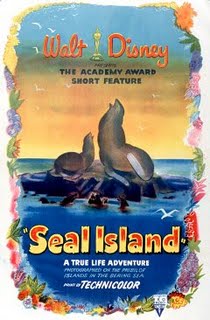
The Living Desert is a 1953 American nature documentary film that shows the everyday lives of the animals of the desert of the Southwestern United States. The film was written by James Algar, Winston Hibler, Jack Moffitt (uncredited) and Ted Sears. It was directed by Algar, with Hibler as the narrator and was filmed in Tucson, Arizona. The film won the 1953 Oscar for Best Documentary.

Walt Disney Pictures is an American film production company and subsidiary of Walt Disney Studios, a division of Disney Entertainment, which is owned by The Walt Disney Company. The studio is the flagship producer of live-action feature films within the Walt Disney Studios unit, and is based at the Walt Disney Studios in Burbank, California. Animated films produced by Walt Disney Animation Studios and Pixar Animation Studios are also released under the studio banner. Walt Disney Studios Motion Pictures distributes and markets the films produced by Walt Disney Pictures.

White Wilderness is a 1958 nature documentary film produced by Walt Disney Productions as part of its True-Life Adventure series. It is noted for its propagation of the misconception of lemming mass suicide.
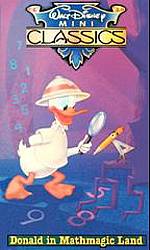
Donald in Mathmagic Land is an American live-action animated featurette produced by Walt Disney Productions and featuring Donald Duck. The short was directed by Hamilton Luske and was released on June 26, 1959. It was nominated for an Academy Award for Best Documentary at the 32nd Academy Awards, and became a widely viewed educational film in American schools of the 1960s and beyond.

A nature documentary or wildlife documentary is a genre of documentary film or series about animals, plants, or other non-human living creatures. Nature documentaries usually concentrate on video taken in the subject's natural habitat, but often including footage of trained and captive animals, too. Sometimes they are about wildlife or ecosystems in relationship to human beings. Such programmes are most frequently made for television, particularly for public broadcasting channels, but some are also made for the cinema. The proliferation of this genre occurred almost simultaneously alongside the production of similar television series which is distributed across the world.

Swiss Family Robinson is a 1940 American film released by RKO Radio Pictures and directed by Edward Ludwig. It is based on the 1812 novel The Swiss Family Robinson by Johann David Wyss and is the first feature-length film version of the story.

Treasure Island is a 1950 adventure film produced by RKO-Walt Disney British Productions, adapted from Robert Louis Stevenson's 1883 novel of the same name. Directed by Byron Haskin, it stars Bobby Driscoll as Jim Hawkins and Robert Newton as Long John Silver. Treasure Island was Disney's first completely live-action film and the first screen version of Treasure Island made in color. It was filmed in the United Kingdom on location and at Denham Film Studios, Buckinghamshire.

True-Life Adventures is a series of short and full-length nature documentary films released by Walt Disney Studios between the years 1948 and 1960. The first seven films released were thirty-minute shorts, with the subsequent seven films being full features. The series won eight Academy Awards for the studio, including five for Best Two Reel Live Action Short and three for Best Documentary Feature.
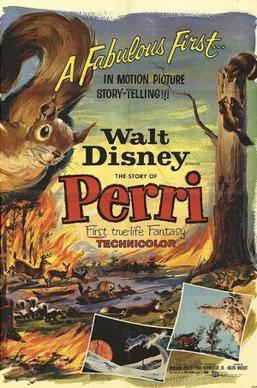
Perri is a 1957 American adventure film from Walt Disney Productions, based on Felix Salten's 1938 Perri: The Youth of a Squirrel. It was the company's fifth feature entry in their True-Life Adventures series, and the only one to be labeled a True-Life Fantasy. In doing so, the Disney team combined the documentary aspects of earlier efforts with fictional scenarios and characters.
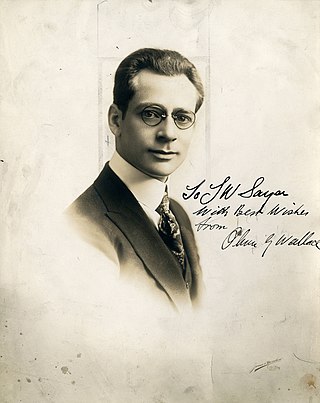
Oliver George Wallace was an English composer and conductor. He was especially known for his film music compositions, which were written for many animation, documentary, and feature films from Walt Disney Studios.

The African Lion is a 1955 American documentary film directed by James Algar. It was released by Walt Disney Productions as part of its True-Life Adventures series. The film, which was shot over a 30-month period in Kenya, Tanganyika and Uganda, focuses on the life of the lion within the complexity of the African ecosystem. At the 6th Berlin International Film Festival it won the Silver Bear (Documentaries) award.
Disneynature is an independent film studio that specializes in the production of nature documentary films for Walt Disney Studios, a division of Disney Entertainment, which is owned by The Walt Disney Company. The production company was founded on April 21, 2008, and is headquartered in Paris, France.
James Algar was an American film director, screenwriter, and producer. He worked at Walt Disney Productions for 43 years and received the Disney Legends award in 1998. He was born in Modesto, California and died in Carmel, California.
In Beaver Valley is a 1950 American short documentary film directed by James Algar. The film was produced by Walt Disney as part of the True-Life Adventures series of nature documentaries. It won an Oscar in 1951 for Best Short Subject (Two-Reel). At the 1st Berlin International Film Festival it won the Golden Bear (Documentaries) award.
Nature's Half Acre is a 1951 American short documentary film directed by James Algar. In 1952, it won an Oscar at the 24th Academy Awards for Best Short Subject (Two-Reel). The film was produced by Walt Disney as part of the True-Life Adventures series of nature documentaries, and was paired with Alice in Wonderland during its original theatrical run.
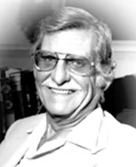
Winston Murray Hunt Hibler was an American screenwriter, film producer, director and narrator associated with Walt Disney Studios.

Water Birds is a 1952 American short documentary film directed by Ben Sharpsteen. In 1953, it won an Oscar for Best Short Subject (Two-Reel) at the 25th Academy Awards. The film was produced by Walt Disney as part of the True-Life Adventures series of nature documentaries. It was shot in Technicolor by more than a dozen cameramen and was created in cooperation with the National Audubon Society and the Denver Museum of Natural History.
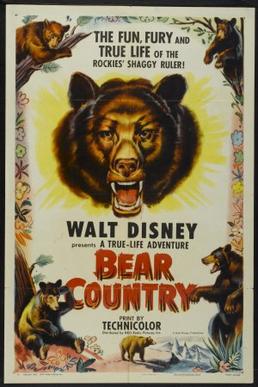
Bear Country is a 1953 American short documentary film directed by James Algar. It won an Oscar at the 26th Academy Awards in 1954 for Best Short Subject (Two-Reel). The film was produced by Walt Disney as part of the True-Life Adventures series of nature documentaries, and played with Peter Pan during its original theatrical run.
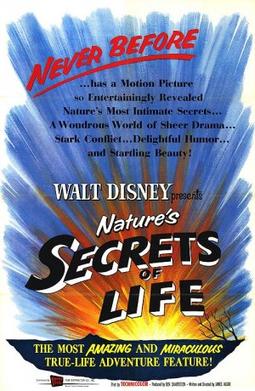
Secrets of Life is a 1956 American documentary film written and directed by James Algar. The documentary follows the changing world of nature, space and animals. The documentary was released on November 6, 1956, by Buena Vista Distribution.
The Best of Walt Disney's True-Life Adventures is an American compilation documentary film produced by Walt Disney Productions, directed by James Algar and released by Buena Vista Distribution on October 8, 1975. The film is composed of highlights from the Academy Award winning True-Life Adventures series of 13 feature length and short subject nature documentary films produced between 1948 and 1960.
